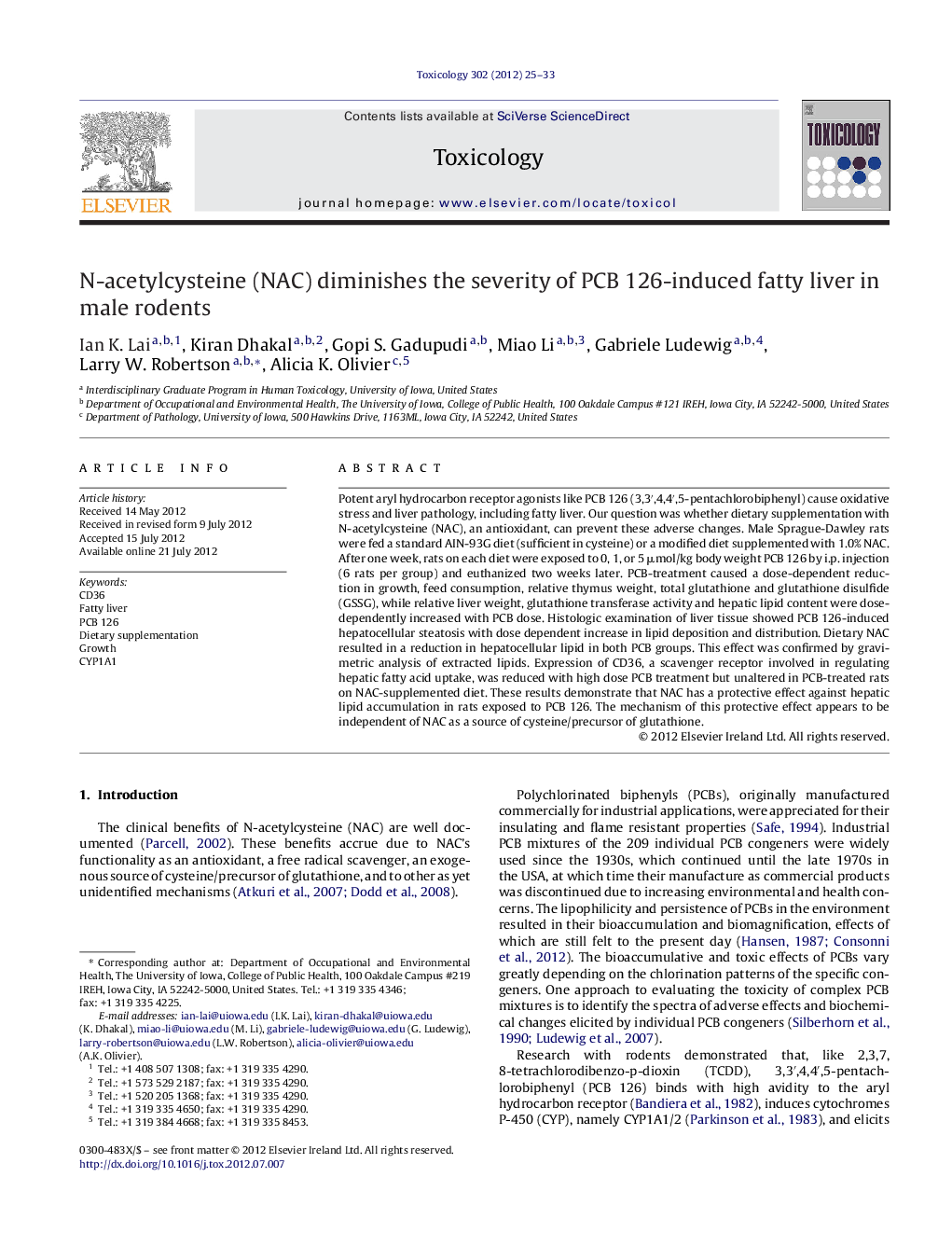| Article ID | Journal | Published Year | Pages | File Type |
|---|---|---|---|---|
| 5859550 | Toxicology | 2012 | 9 Pages |
Potent aryl hydrocarbon receptor agonists like PCB 126 (3,3â²,4,4â²,5-pentachlorobiphenyl) cause oxidative stress and liver pathology, including fatty liver. Our question was whether dietary supplementation with N-acetylcysteine (NAC), an antioxidant, can prevent these adverse changes. Male Sprague-Dawley rats were fed a standard AIN-93G diet (sufficient in cysteine) or a modified diet supplemented with 1.0% NAC. After one week, rats on each diet were exposed to 0, 1, or 5 μmol/kg body weight PCB 126 by i.p. injection (6 rats per group) and euthanized two weeks later. PCB-treatment caused a dose-dependent reduction in growth, feed consumption, relative thymus weight, total glutathione and glutathione disulfide (GSSG), while relative liver weight, glutathione transferase activity and hepatic lipid content were dose-dependently increased with PCB dose. Histologic examination of liver tissue showed PCB 126-induced hepatocellular steatosis with dose dependent increase in lipid deposition and distribution. Dietary NAC resulted in a reduction in hepatocellular lipid in both PCB groups. This effect was confirmed by gravimetric analysis of extracted lipids. Expression of CD36, a scavenger receptor involved in regulating hepatic fatty acid uptake, was reduced with high dose PCB treatment but unaltered in PCB-treated rats on NAC-supplemented diet. These results demonstrate that NAC has a protective effect against hepatic lipid accumulation in rats exposed to PCB 126. The mechanism of this protective effect appears to be independent of NAC as a source of cysteine/precursor of glutathione.
